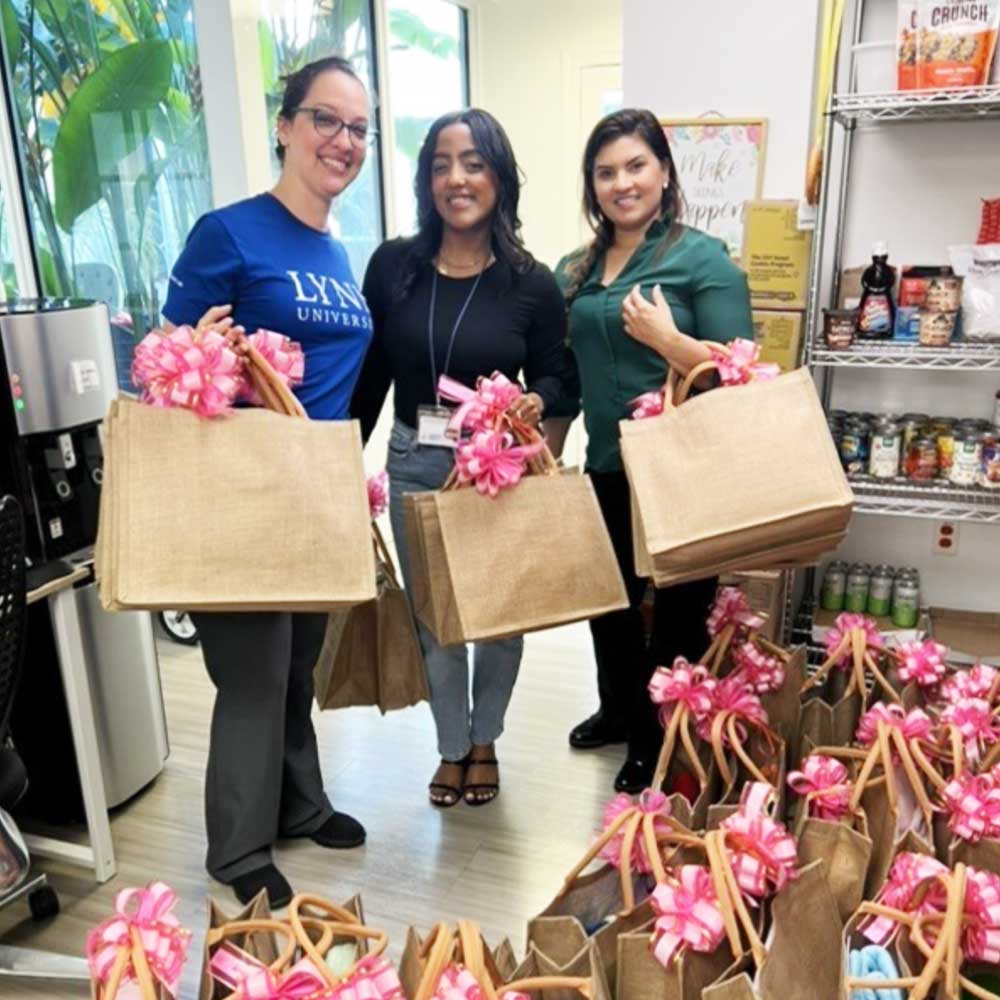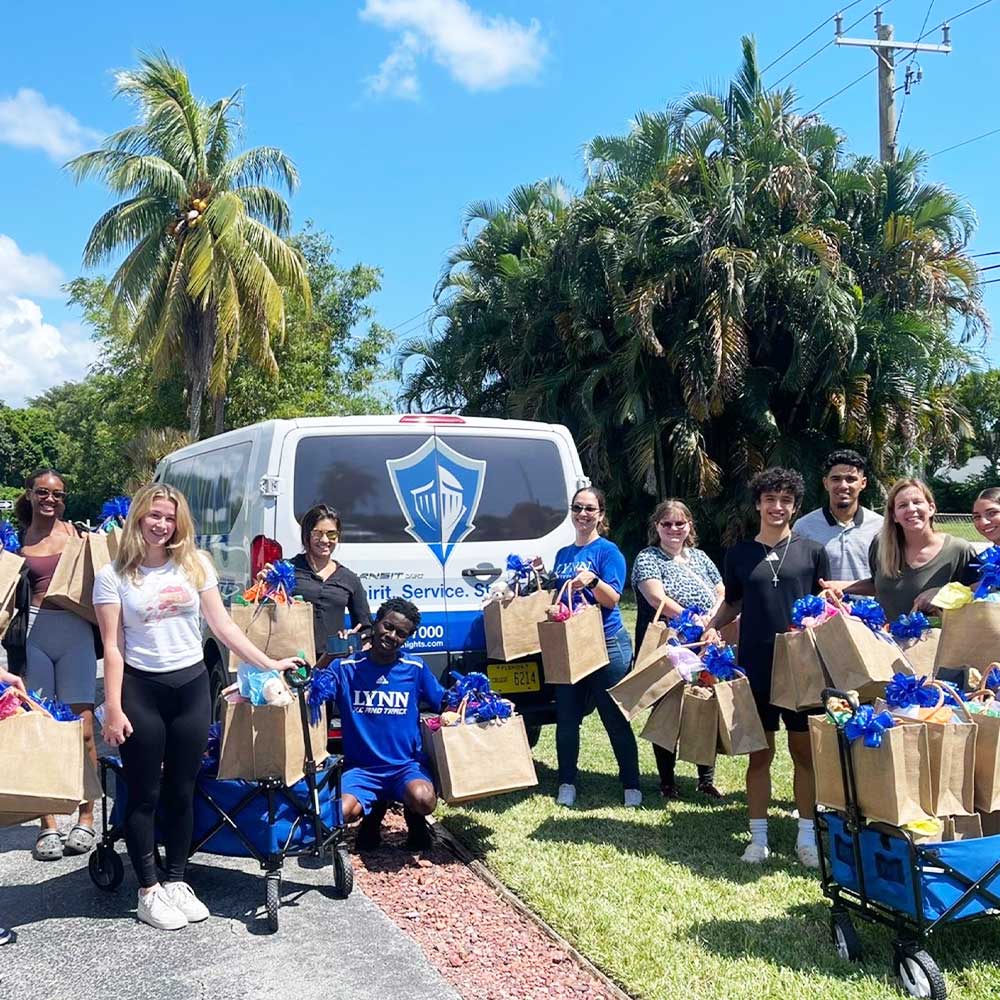

“We chose a course that already revolved around the UN Sustainable Development Goals, and partnered with SIMA to make the movies more relevant. These changes expanded our reach and allowed us to delve into a variety of issues thanks to the films hosted in the SIMA platform.”
— Antonella Regueiro
Antonella Regueiro is an Educator at the Lynn University in Boca Raton, Florida in the United States. For the SIMA Changemaker Award, Antonella Regueiro chose to screen several films, including Kayayo, Goodwill Dumping, and Voices from the Sea.
Kayayo takes place in the capital of Ghana, where 10,000 girls from the ages of 6 work as real life shopping baskets – called Kayayo. This documentary is about Bamunu, an 8-year-old girl who hasn’t seen her family since she was sent away from home two years ago to work as a Kayayo to support her family.
The stylized fashion documentary Goodwill Dumping brings the enormity of the industry surrounding donated secondhand clothing to light. The film showcases the journey that discarded pieces of clothing make and what kind of impact this has on local industries. Due to its globalized scale this immense industry has something otherworldly. The film shows the process and butterfly effect caused by the simple action of donating your old T-shirt. Creatures created out of mountains of discarded clothes add a layer of stylized and surrealistic commentary on the industry.
With an original soundtrack made by Ana Tijoux and narrated by Sylvia Earle, “Voices from the Sea” tells the story about the battle of a remote society to save the sea, and this action becomes an example of courage for the planet.
Through the films, Antonella Regueiro encouraged the students to connect with Sustainable Development Goal (SDG) Number 1: No Poverty, SDG Number 12: Responsible Consumption and Production, and SDG 14: Life Below Water. Antonella Regueiro received a special mention for the 2023 SIMA Educator Changemaker Award.
The Project Description:
The Impact Series program is an academic program built to engage students in discussions surrounding social impact and justice. At Lynn University, students have school on a block schedule, which means they change classes every four weeks. This program occurs in every block, for a total of 8 iterations of the Impact Series throughout the academic year (4 in the Fall and 4 in the Spring). This is a mandatory component of the core curriculum of the university for all second-year students through their Dialogues of Justice and Civic Life course. The program is divided into three events:
-Watch and Discuss: In this event, students watch films from SIMA relating to specific SDGs, and then participate in a discussion led by a faculty member.
-Listen and Learn: In this event, a guest speaker from a local organization related to the same SDGs, shares their work with the students and relates it back to the issues discussed on the first day.
-Read and Serve: In this event, students discuss a current event article with a Lynn librarian and then participate in an act of service that benefits the partner organization we work with that month.
Together, these programs help students discover and discuss a variety of issues, which they can then use in their DJC200 course to develop their own projects to tackle a specific issue related to the UN SDGs.
What is the topic, theme, SDG or social issue your project addresses?
The project covers a variety of SDGs throughout the academic year, so I would say the theme is SDG Education.
What SIMA Academy film(s) inspired your project?
I was inspired by the SIMA platform itself, but have used several excellent films as part of the project including Kayayo, Goodwill Dumping, and Voices from the Sea.
What did you learn from the film(s)? Did your perspective about the issue change or did you discover something new?
I learned that there is still a lot to learn about the world, and that sharing that knowledge with my students early in their academic careers is important for their development. When I went to school, something like SIMA did not exist, so the opportunities for global learning through film were more limited. The Goodwill Dumping film, in particular, really forced me to reconsider my choices in terms of fashion to ensure that I do not continue contributing to the issue.
What type of project did you create?
The program has 3 parts: A Dialogue and Discussion, a guest speaker presentation, and a service act benefiting a local partner working on issues related to the topics at hand.
What planning resources did you utilize to create your project. Please describe and/or share a link.
In terms of planning and resources, I rely on the resources of my department to obtain any needs such as snacks, materials for the service event, etc. I rely on SIMA to plan the entire project, as the movies we have available through this platform define the topics for the program each month, and thus shape the rest of the logistical planning for this program. Please see the AY23-24 Schedule document to truly understand this.
Please tell us about the impact of your project. You can use both quantitative and qualitative outcomes.
This project has become a required component of the university’s core curriculum and, consequently, now involves the entire sophomore class each year. At the end of each month (the university works in a block schedule), students are provided a survey about their experience in the program. Of the students who replied to the survey so far in AY23-24, 41% Strongly Agree, and 33% Agree (74% total) that the program has allowed them to evaluate challenges of equality, justice, and power. 36% Strongly Agree, and 28% Agree (64% total) that the program allows them to critically reflect on their values and responsibilities regarding civic engagement. 38% Strongly Agree, and 33% Agree (71% total) that the program provided them with a better understanding of how they can create a positive impact in their communities. As such, this program is proving successful at opening our student’s eyes to civic engagement and social responsibility. SIMA plays a pivotal role in that success as the films are shown in the first event of the series (the program has a total of three events per month).
The Watch and Discuss event, which involves the film from SIMA, has a vote of 61.5% as the event in the series that has helped students the most in furthering their knowledge about important issues. In addition to the overwhelmingly positive student feedback for this project, the impact of it extends to our organizational partners with whom we engage in an act of service each month. We try to match the partners to the overall theme of the films. For example, in Block C, we watched Kayayo: The Human Shopping Baskets and explored issues of poverty and basic needs. To match this, we worked with a local organization that works with undocumented migrant communities to help them satisfy their basic needs. Through this approach, we ensure a global perspective (through the SIMA films) and a local connection (through the organizational partners).
Please tell us what you learned in the process of creating your project?
There were a lot of challenges in creating this project. It started three years ago as an extracurricular activity that I was passionate about. I wanted my students to be able to discuss pressing social and environmental issues in a safe space and with enough flexibility for open dialogue. Not many students showed up, but then I partnered with other departments and made this into an interdepartmental collaboration, which allowed us to expand resources and also our pool of participants. By the end of the second year, administration had gotten wind of the program and liked it so much that they wanted me to work on integrating it into the core curriculum of the university, so we did.
We chose a course that already revolved around the UN Sustainable Development Goals, and partnered with SIMA to make the movies more relevant (the original program worked with regular feature films). These changes expanded our reach and allowed us to delve into a variety of issues thanks to the films hosted in the SIMA platform. The best part was that by not giving up after low attendance in the first and second years, I managed to keep the program alive to be able to partner with SIMA and bring it to life as a required component of the course. The administration’s buy-in for this program really showed me that I had the right idea in bringing it to life, I just needed some help with the execution. The program is now also a required component of other initiatives, such as the Accelerated Degree program and the Impact Scholars Program. It has been with great pride that I have watched this program grow into what it is today, and I am excited to see where it goes next… even when the work to put it all together is so overwhelming.
Tell us about 1 thing you will do differently in the future after learning about this social issue and creating your own project about it.
Personally, I have learned a lot about different issues through the use of SIMA in the program. In particular, I have learned about the cost of fast fashion and the irresponsible dumping of used clothes through the use of Goodwill Dumping. This is why I am more committed to thrifting, reusing, and repurposing old clothes, as well as reducing the amount of clothes I buy throughout the year. The use of SIMA in this project allows me to expand not only my perspective, but that of my students as well and that is the end goal of all of this: To make sure we educate changemakers.